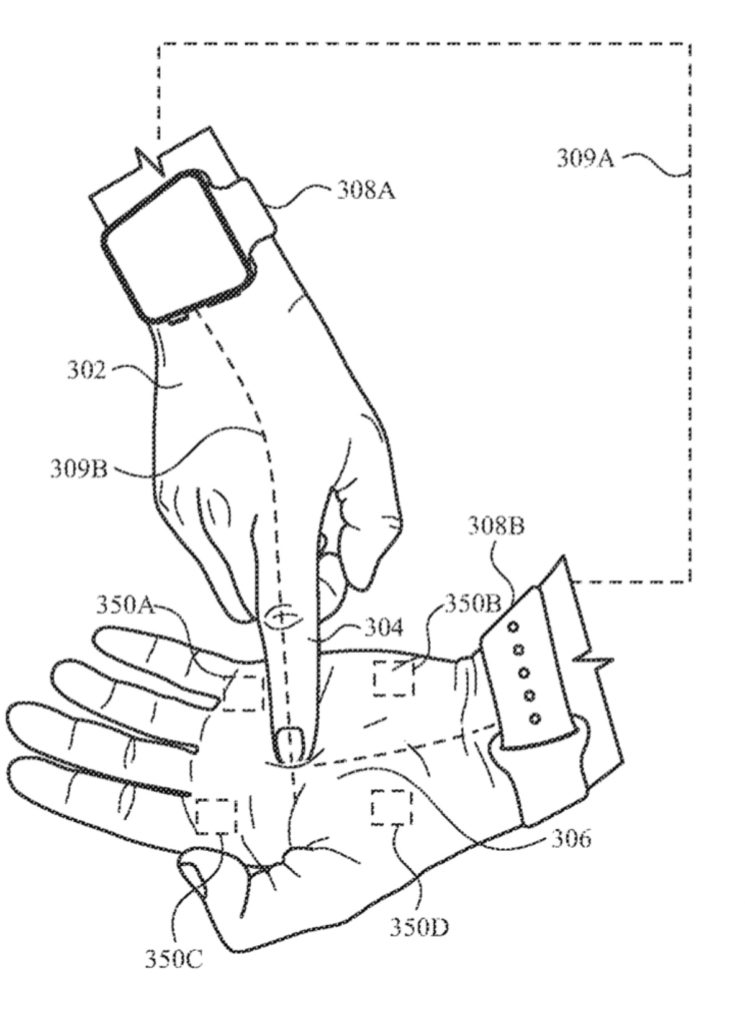Apple has filed for two patents (number 20210303069 and 20210303068) for “skin-to-skin contact detection.” It involves the ability for an Apple Watch to tell the difference between contact with your wrist and a finger. It also involves he rumored “Apple Glasses” and the ability to differentiate between the skin on your face and your fingers.
About the patent filings
In the patent filing, Apple notes that many types of input devices are presently available for performing operations. In some examples, contact between two different parts of a user’s body may be used for input.
For example, cameras in a head-mounted display can be used to track movement of fingers to detect a finger in contact with an opposite hand, or to track movement of a finger along an opposite hand surface. Additionally or alternatively, a radio frequency-based system can be used to detect a finger in contact with an opposite hand, or to track movement of a finger along an opposite hand surface. However, Apple says that camera-based systems and/or radio frequency-based systems may have difficulty detecting the difference between a finger touching the opposite hand or proximate to without contacting (hovering above) the opposite hand.
Additionally, camera-based systems require the finger and opposite hand be in the field of view of the cameras for operation. Apple wants the Apple Watch and Apple Glasses to overcome such limitations.
Summary of the patent filings
Here’s Apple’s abstract of the patent filings: “Contact or movement gestures between a first body part and a second body part can be detected. Sense circuitry can be configured to sense a signal at the sense electrode (e.g., configured to contact the second body part) in response to a drive signal applied to the drive electrode (e.g., configured to contact the first body part).
“Processing circuitry can be configured to detect contact in accordance with a determination that one or more criteria are met (e.g., an amplitude criterion and a non-distortion criterion). Additionally or alternatively, processing circuitry can be configured to detect a movement gesture in accordance with a determination that one or more criteria are met (e.g., a contact criterion and a movement criterion).”
FIG. 3B illustrate a proximity and a contact, respectively, between a first body part and a second body part.
Article provided with permission from AppleWorld.Today

